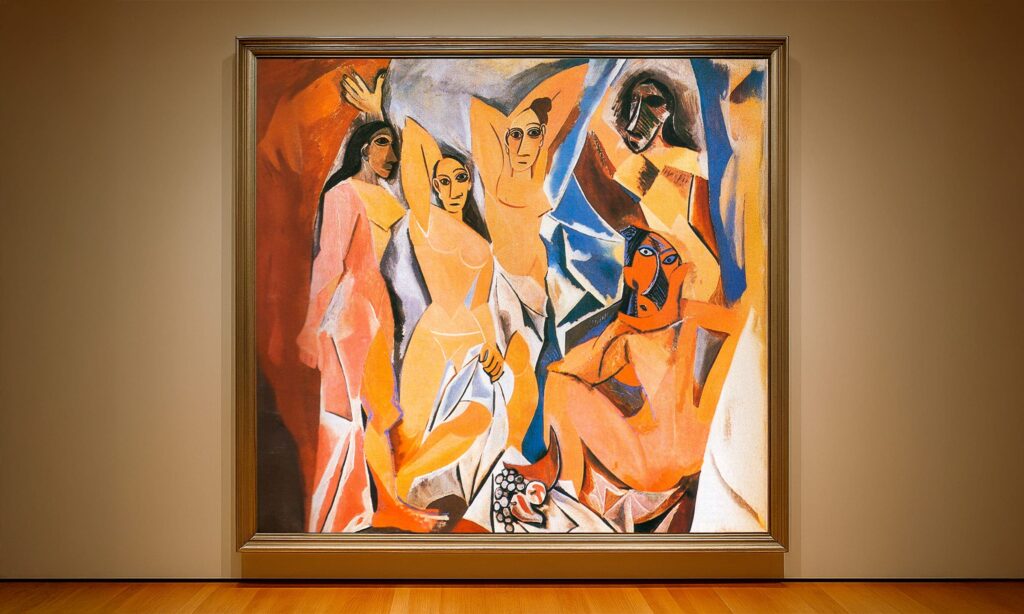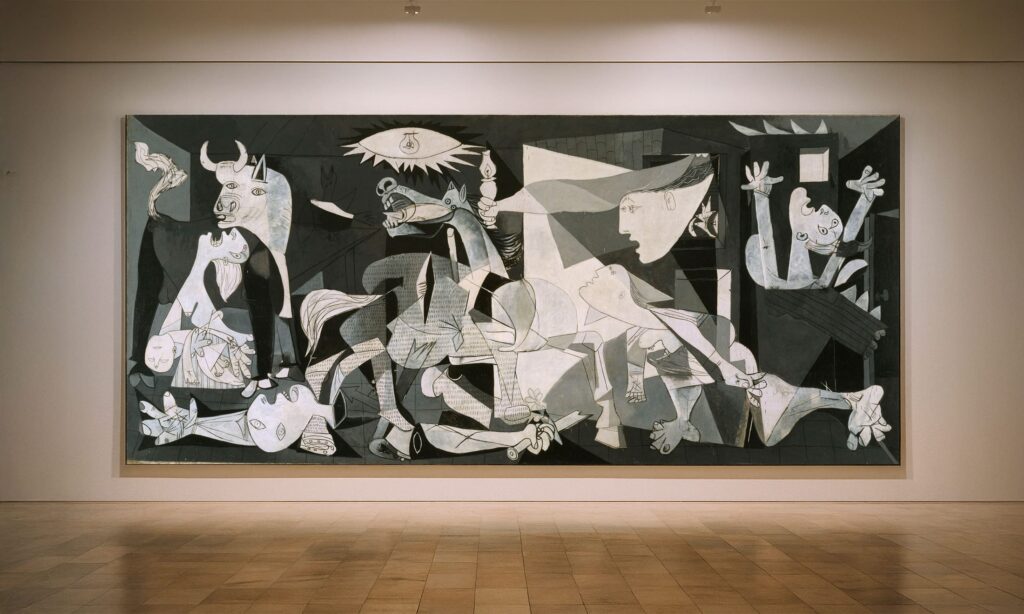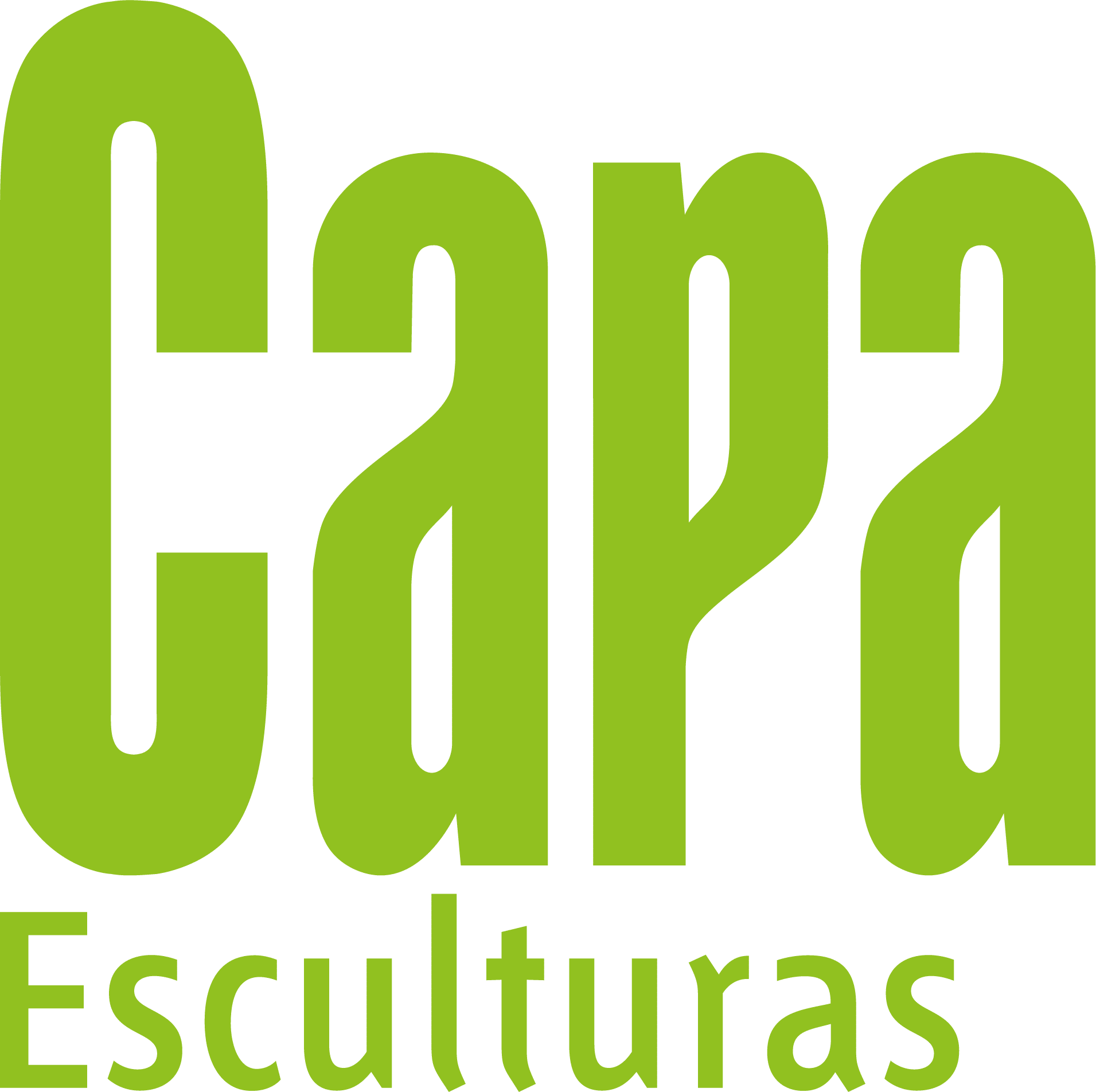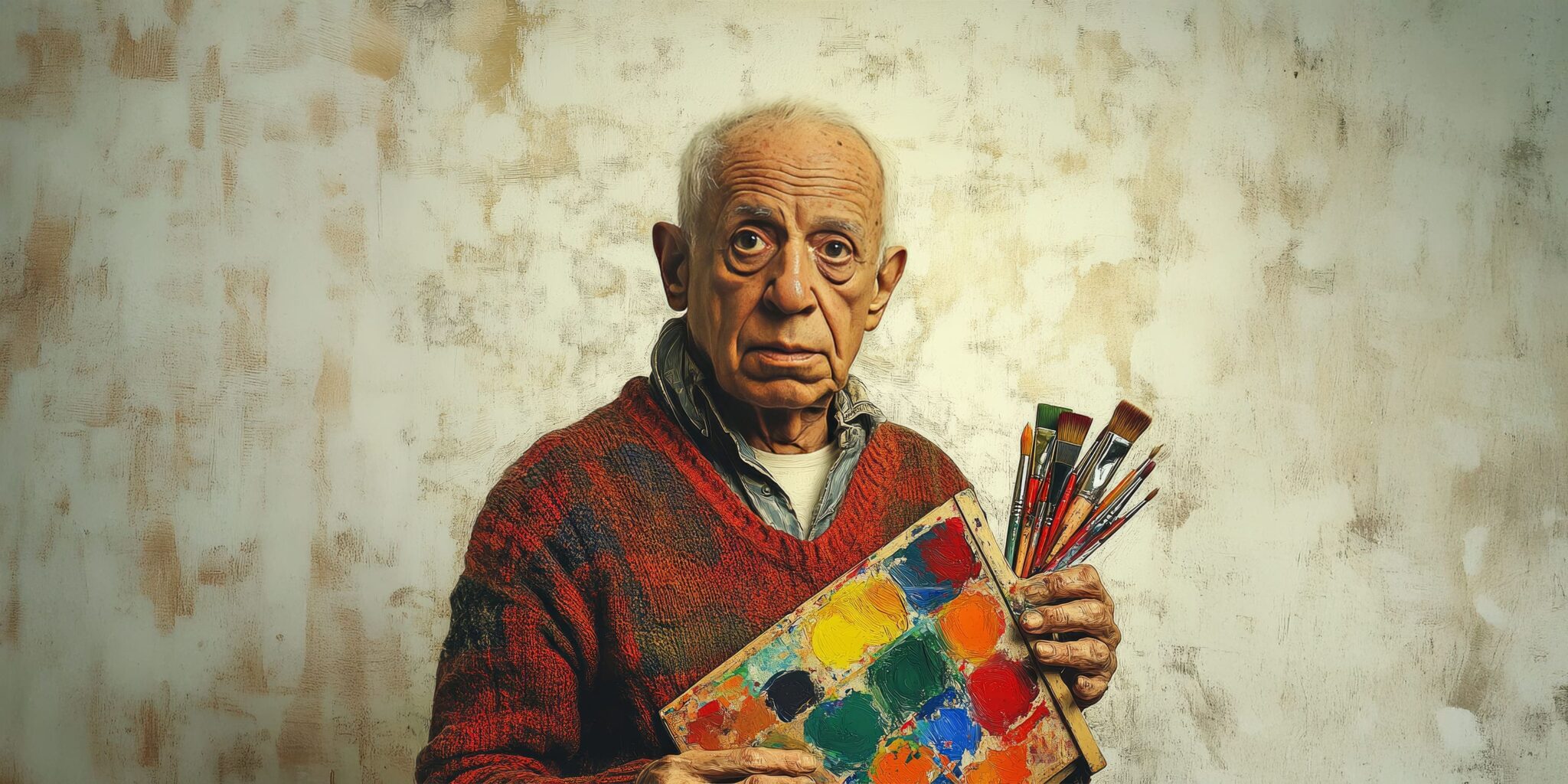Pablo Picasso was one of the most influential artists of the 20th century. His work completely changed the way we understand painting, sculpture, and artistic creation in 20th-century art. Born on October 25, 1881, in Málaga, he became a total creator. He was able to master classical techniques learned at the Academy of Fine Arts and revolutionize art with ideas that broke all the rules.
Picasso’s art was not limited to one style or discipline, but encompassed multiple forms of expression. From painting to engraving, from ceramics to sculpture, his genius was expressed in each work.
Picasso and the revolution of modern art
This artist’s biography is marked by a constant desire for innovation. Picasso had a profound influence on modern art. From his early years in Barcelona and Paris, he showed precocious talent and an enormous capacity to absorb influences and transform them into his own unique language.
Picasso’s stages reflected a personal and emotional search, such as the Blue Period and the Rose Period. This would later lead to the birth of analytical cubism and, subsequently, synthetic cubism, together with Georges Braque.
Picasso’s Cubism was not just a painting technique, but a true revolution. By fragmenting forms and representing different perspectives on the same plane, he challenged the principles of traditional perspective. In this process, he was inspired by African masks, integrating elements that marked a new aesthetic vision. The result was the creation of a unique style that defined the artistic movements of the 20th century.
This approach changed painting forever and paved the way for the avant-garde. Picasso painted works such as Les Demoiselles d’Avignon and Guernica, which demonstrate his ability to innovate and convey universal messages in the complex historical context of World War I and the Spanish Civil War.

The art of Picasso in all its facets
Painting and Cubism
Although Cubism is inseparable from his name, Picasso’s painting spanned multiple styles. From the academic realism of his youth to the expressive distortions of his maturity, he never stopped reinventing himself. During his Cubist period, he experimented with colors, shapes, and overlapping planes, creating a new way of perceiving reality. In his canvases, he worked with techniques such as oil on canvas and was inspired by still life, reinterpreting this classical tradition from a contemporary perspective.
Synthetic Cubism and Analytical Cubism marked a turning point in art history. Furthermore, with works such as Guernica, he established himself as an artist committed to his time, capable of turning painting into a political and social cry. Today, the painting is housed in the Reina Sofía National Art Museum and has become a universal symbol of peace and condemnation of war.

Engraving, ceramics, and other disciplines
Picasso’s art was much more than painting. His curiosity led him to engraving, where he explored techniques such as etching and lithography. Picasso’s engravings are highly valued today for demonstrating his mastery of line and his ability to synthesize.
He also ventured into ceramics, creating original pieces that broke with established norms. The combination of tradition and avant-garde defined the importance of Picasso’s ceramics within his career.
In Paris, his studio at the Bateau-Lavoir became a meeting place for artists and intellectuals. There, Picasso developed many of his innovations, always surrounded by the atmosphere of international exhibitions that set the cultural tone of his era.
Sculpture in Picasso’s career
Although less known than his painting, Picasso’s sculpture represents an essential part of his legacy. From pieces in plaster and bronze to innovative assemblages of everyday objects. And he transferred to volume the ideas he had already explored in his canvases. Sculptures such as Woman in the Garden or the famous Bull’s Head reflect his ability to transform simple materials into timeless works.
Picasso the sculptor was just as transgressive as Picasso the painter. His three-dimensional work opened up new possibilities for modern sculpture, connecting the artisanal with the industrial and the experimental.
If you want to learn more, we recommend reading our article on Picasso’s sculptures.
Picasso’s artistic legacy
Picasso’s artistic legacy is immense. No other modern artist had such a profound and lasting impact. Picasso’s famous works can be found in major museums around the world, such as the Museum of Modern Art in New York and the Reina Sofía National Art Museum in Madrid. These spaces allow visitors to appreciate the scope of an artist who always sought innovation.
Picasso inspired generations of creators to break free from norms and experiment fearlessly. His influence transformed artistic movements and cemented Picasso as one of the most influential artists of all time.
To speak of Picasso is to speak of an inexhaustible genius. A painter, engraver, ceramist, and sculptor, his work spanned all disciplines and transformed modern art. Picasso’s style is a testament to his creative courage, his ability to break the mold, and his universal influence.
His painting established his reputation, but his curiosity took him further, turning him into a total creator. By also exploring sculpture, ceramics, and engraving, he demonstrated that art can emerge from any material and that ideas have no boundaries. Picasso was not just a painter; he was the artist who redefined art in all its dimensions.

